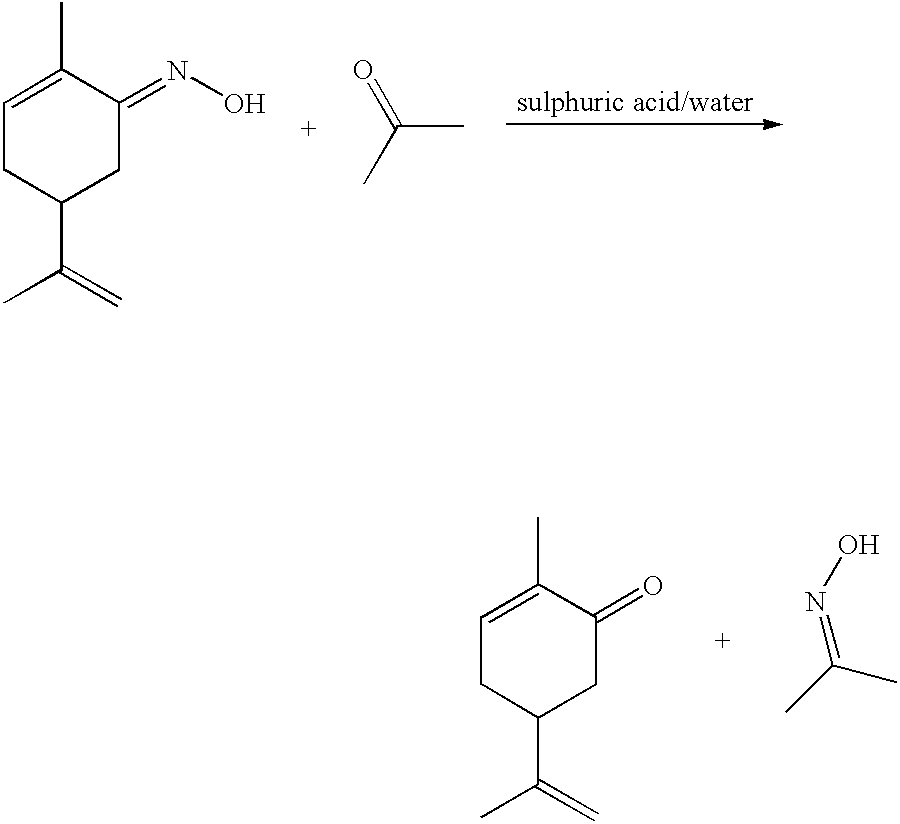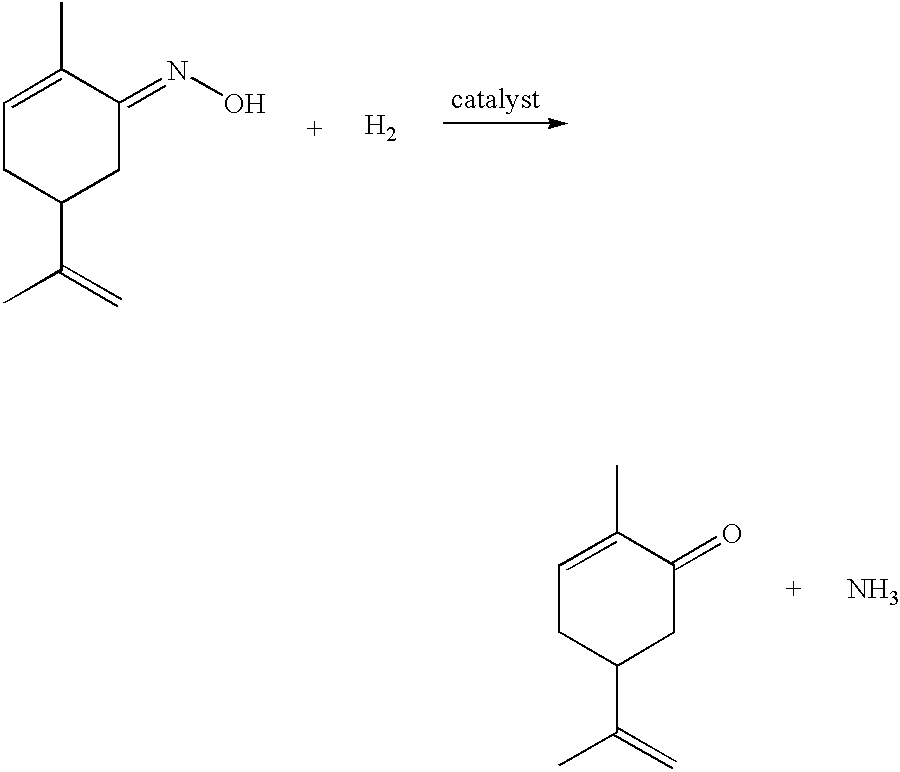Preparation of carvone
a carvone and carvone technology, applied in the preparation of carbonyl compounds, physical/chemical process catalysts, organic chemistry, etc., can solve the problems of high environmental burden, inconvenient purification process, and inability to separate materials, and achieve the effect of low levels of undesirable impurities
- Summary
- Abstract
- Description
- Claims
- Application Information
AI Technical Summary
Benefits of technology
Problems solved by technology
Method used
Image
Examples
example 2
The outlet of an HPLC pump was connected to the Parr microreactor by stainless steel tubing (1.6 mm internal diameter).
A solution of 22.23% by weight pure L-carvoxime in acetic acid was prepared (by dissolving 35 g pure L-carvoxime in 122.4 g acetic acid). The bottle of the solution was placed on a balance and the inlet tube of the HPLC pump, equipped with a filter, held in position by a clamp, was dipped into the solution.
To a 100 ml Parr reactor, 20 ml acetic acid, 1 ml water, 0.0507 g catalyst (5% Pd on BaSO.sub.4) and 0.0109 g red lead oxide were added. The reactor was then purged with hydrogen, pressurised (with hydrogen) to 4.59 MPa and heated at 127.degree. C. The pump, set at a flow rate of 0.03 ml / min, was then turned on and the addition of the solution comprising L-carvoxime in acetic acid started. The temperature, pressure and weight of the L-carvoxime solution was monitored throughout the reaction. The addition was terminated after 5.5 hrs, during which time 16.70 g feed...
example 3
To a refluxing suspension of anhydrous sodium acetate (20 g) dissolved in water (40 ml), acetic acid (250 ml), 5% Pd on BaSO.sub.4 catalyst (20 g), and red lead oxide (1.94 g), was added dropwise over 6 hours at 112-117.degree. C., a solution of L-carvoxime in formic acid (534.27 g containing 36% carvoxime, prepared from d-limonene as hereinabove described). The reaction was further refluxed for another 8 hours. When, from GC analysis, the reaction was complete, it was cooled to room temperature. Deionised water (400 ml) was then added with stirring to the reaction mixture. The organic phase and aqueous phase were separated and the solvent of the organic layer was removed in vacuo to yield; 434.44 g of crude product. The crude product was found to contain 39.1% carvone by internal standard GC, (the method and chromatography conditions are as indicated above in Example 2), hence the yield of the reaction was 81.35%.
PUM
| Property | Measurement | Unit |
|---|---|---|
| Pressure | aaaaa | aaaaa |
| Pressure | aaaaa | aaaaa |
| Angle | aaaaa | aaaaa |
Abstract
Description
Claims
Application Information
 Login to View More
Login to View More - R&D
- Intellectual Property
- Life Sciences
- Materials
- Tech Scout
- Unparalleled Data Quality
- Higher Quality Content
- 60% Fewer Hallucinations
Browse by: Latest US Patents, China's latest patents, Technical Efficacy Thesaurus, Application Domain, Technology Topic, Popular Technical Reports.
© 2025 PatSnap. All rights reserved.Legal|Privacy policy|Modern Slavery Act Transparency Statement|Sitemap|About US| Contact US: help@patsnap.com



